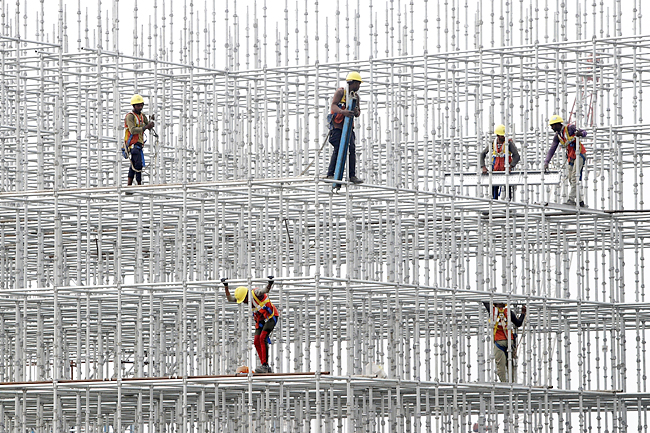AP – The Asian Development Bank (ADB) has downgraded its forecasts for growth in the region, citing the war in Ukraine, rising interest rates to combat decades-high inflation, and China’s slowing economy.
The Manila, Philippines-based lending agency revised its estimate for growth in developing Asian economies to 4.3 per cent, down from an earlier forecast of 5.2 per cent. Growth in 2023 was cut to 4.9 per cent from 5.3 per cent in the revised regional outlook released yesterday.
ADB economists said that for the first time in three decades, developing Asian economies would grow faster than China’s.
The updated outlook forecast that the world’s second-largest economy would expand at a 3.3 per cent annual pace this year, down from 8.1 per cent in 2021 and far below the ADB’s April estimate of a five per cent expansion.
India and Maldives were forecast to see the fastest expansions, at seven per cent and 8.2 per cent, respectively.

In Sri Lanka the economy is forecast to contract by 8.8 per cent, down from a 3.3 per cent pace of growth last year.
The ADB’s forecast for inflation in Asia remains less severe than in the United States and some other economies, at 4.5 per cent in 2022 and four per cent next year. But the report put inflation in Sri Lanka at nearly 45 per cent this year, while prices were forecast to rise 16 per cent in Myanmar and nearly 15 per cent in Mongolia.
Surging costs for grain and for oil and gas have been the main factors behind price increases, the report showed, noting that “While global food and energy prices have been decreasing recently, it will take time for these declines to translate into lower domestic prices.”
Most Southeast Asian economies are expected to keep up a robust pace of growth as they re-open to tourism and demand recovers. Domestic consumer spending, investment and remittances from overseas workers are also driving stronger business activity, the report said.
But the demand driving growth remains relatively weak. While exports across the region rose 15 per cent from a year earlier in the first half of the year, most of that reflected higher prices, with the real volumes of exports up only 5.2 per cent. Exports fell in July and August.







